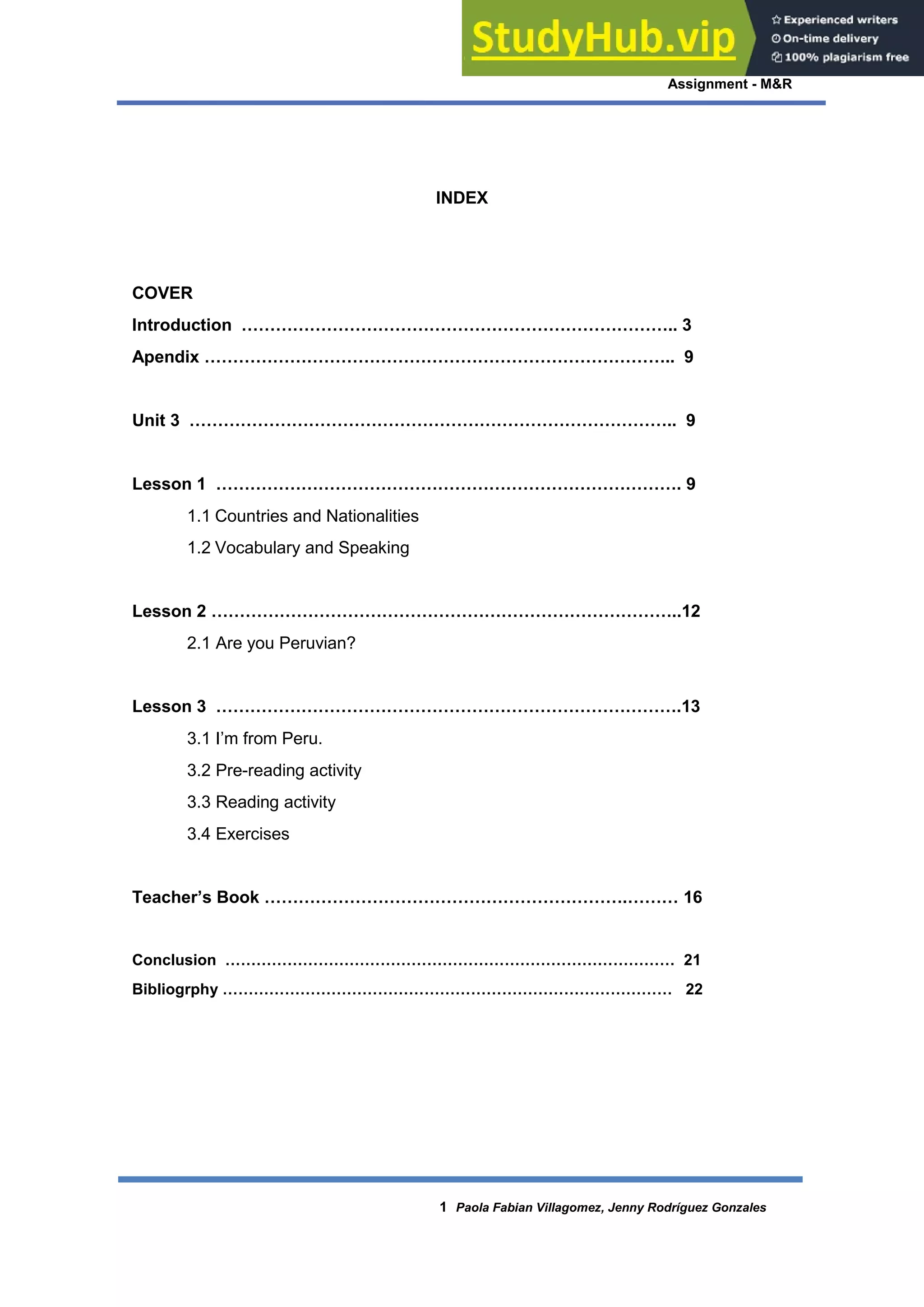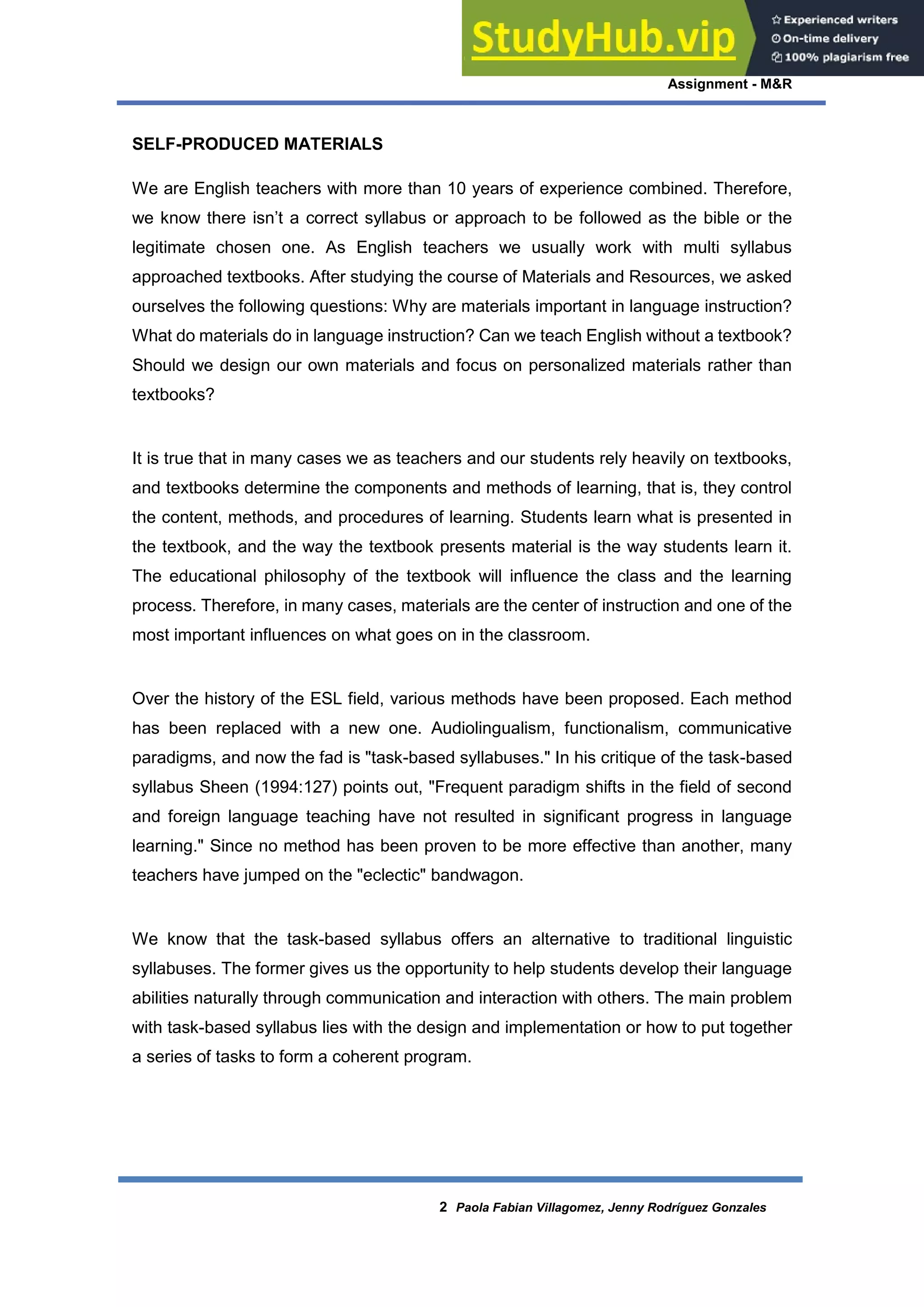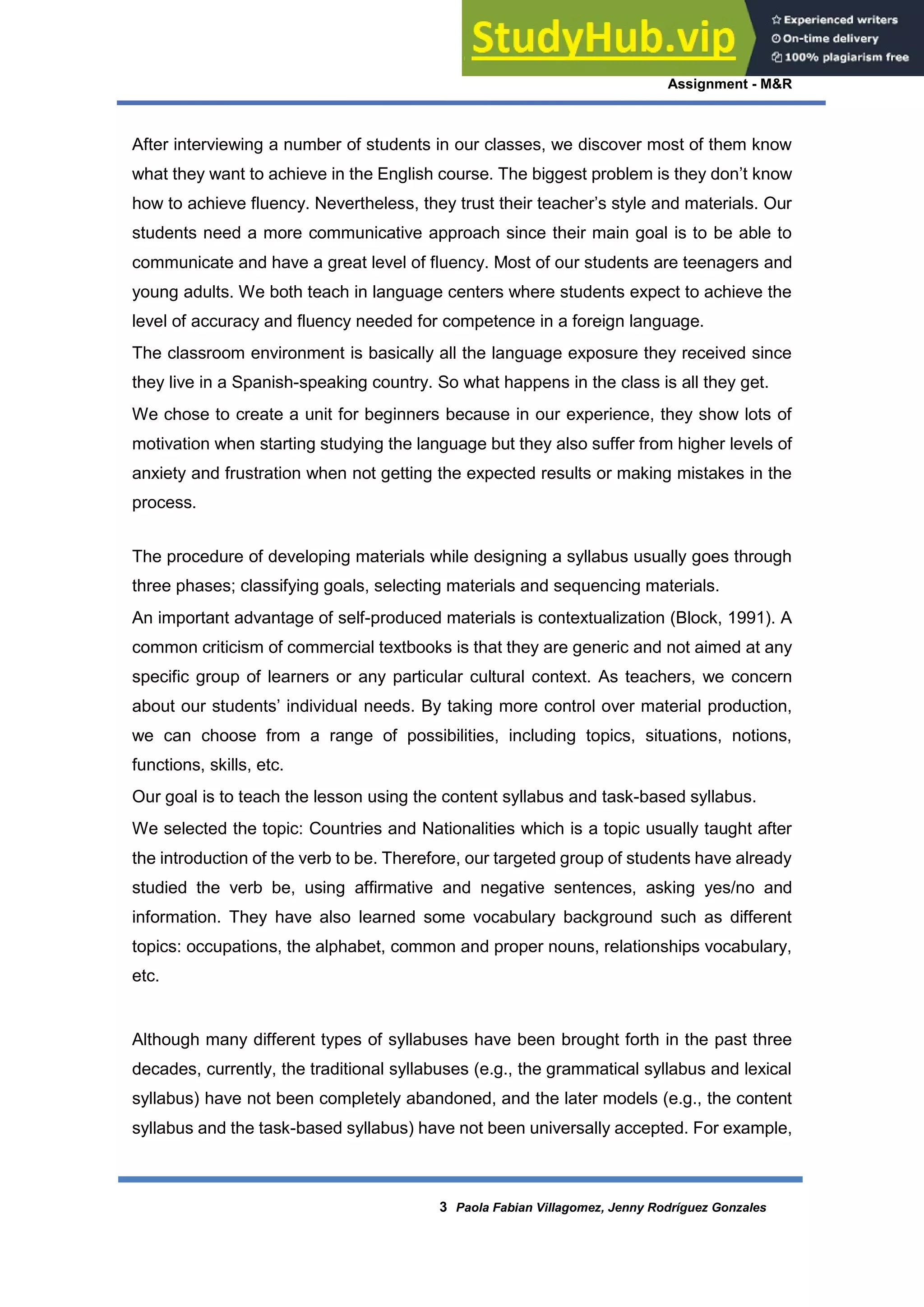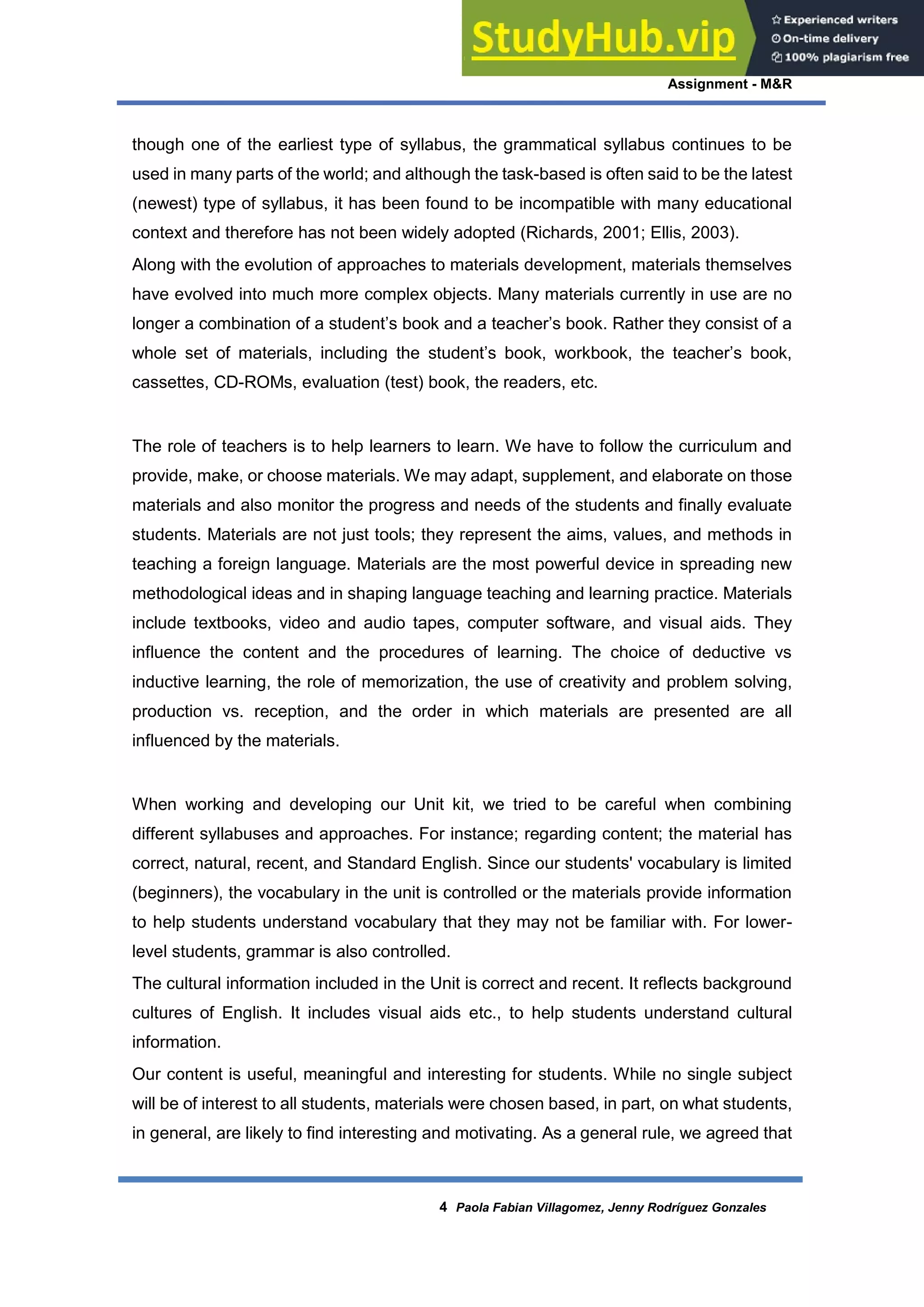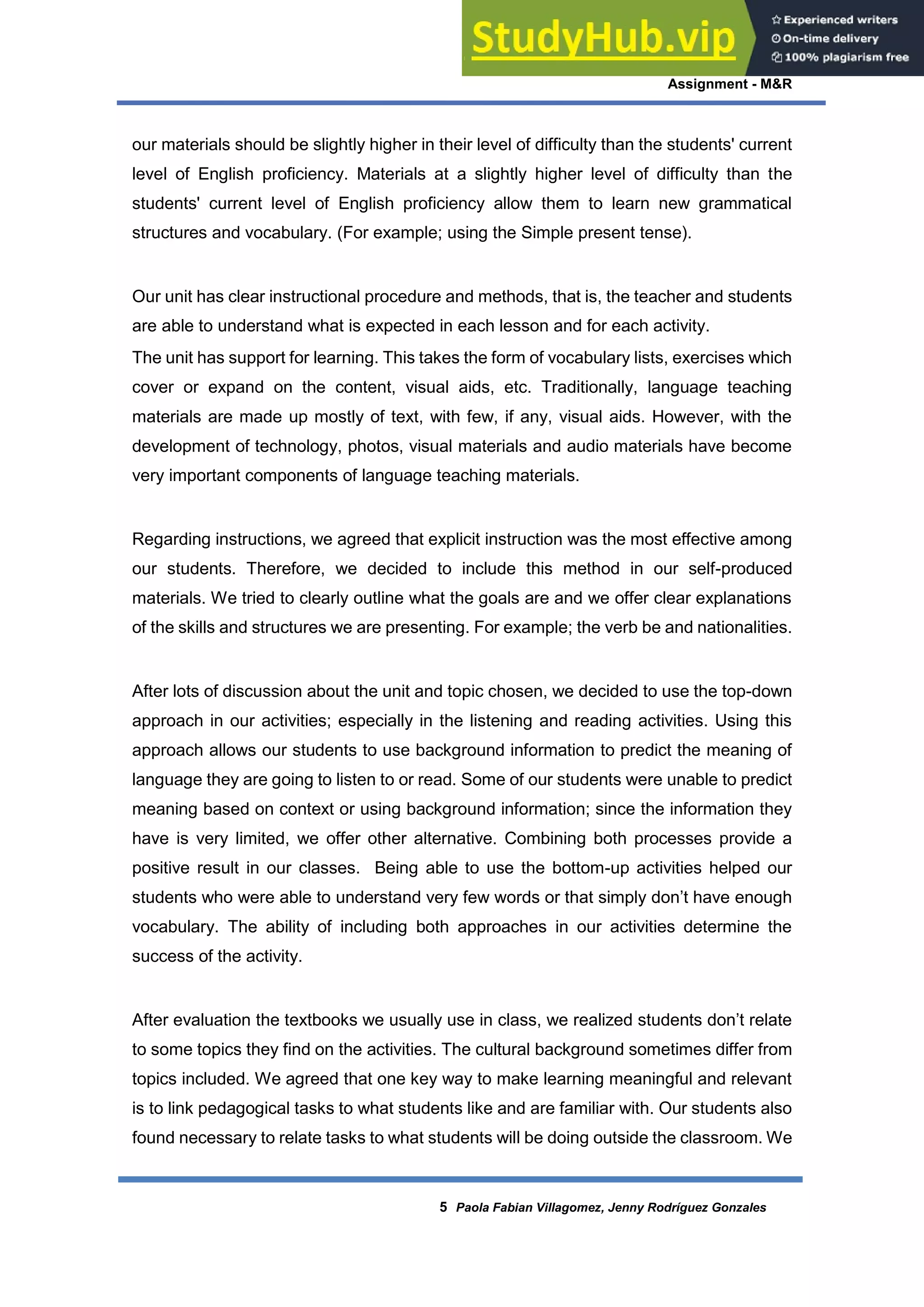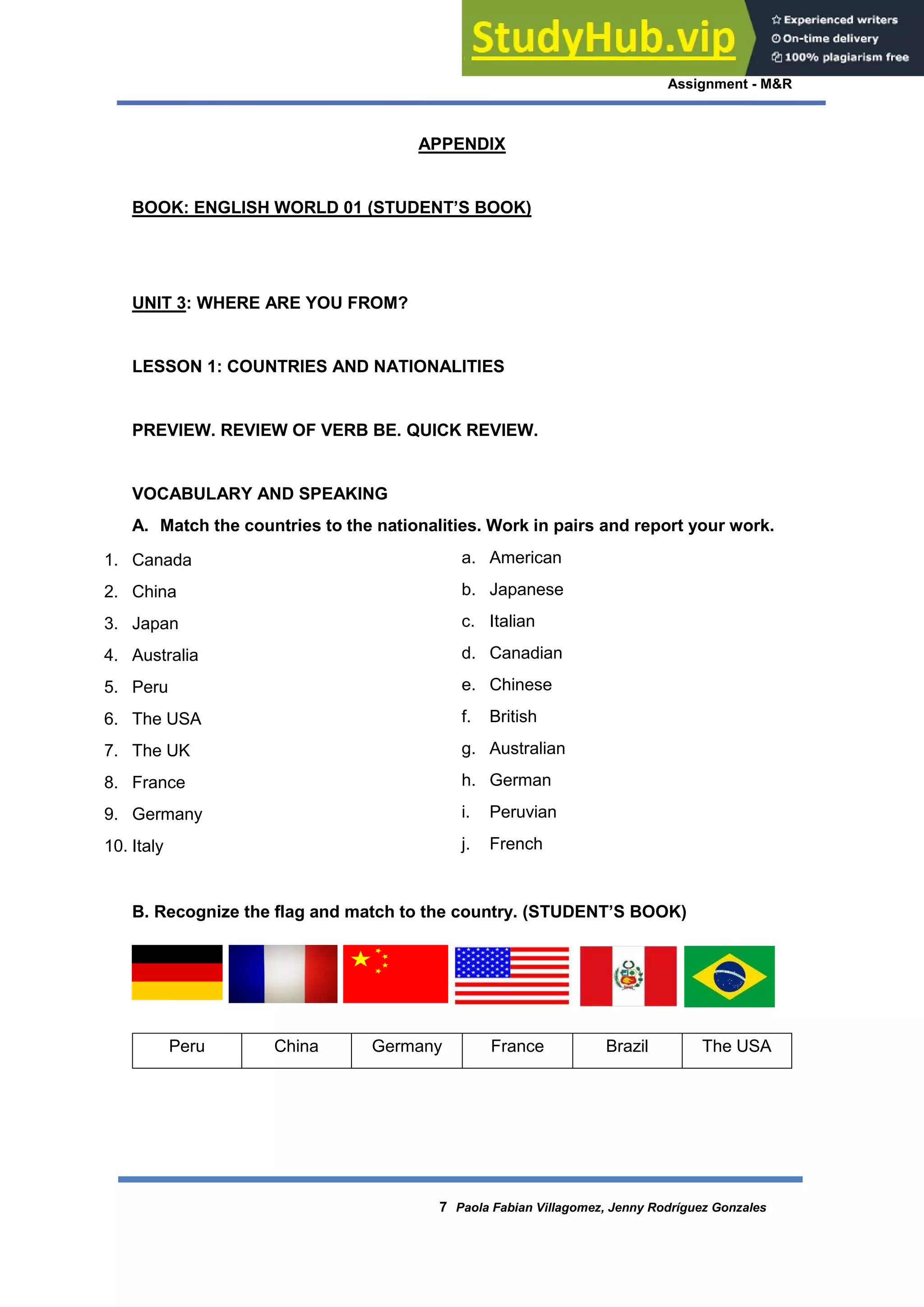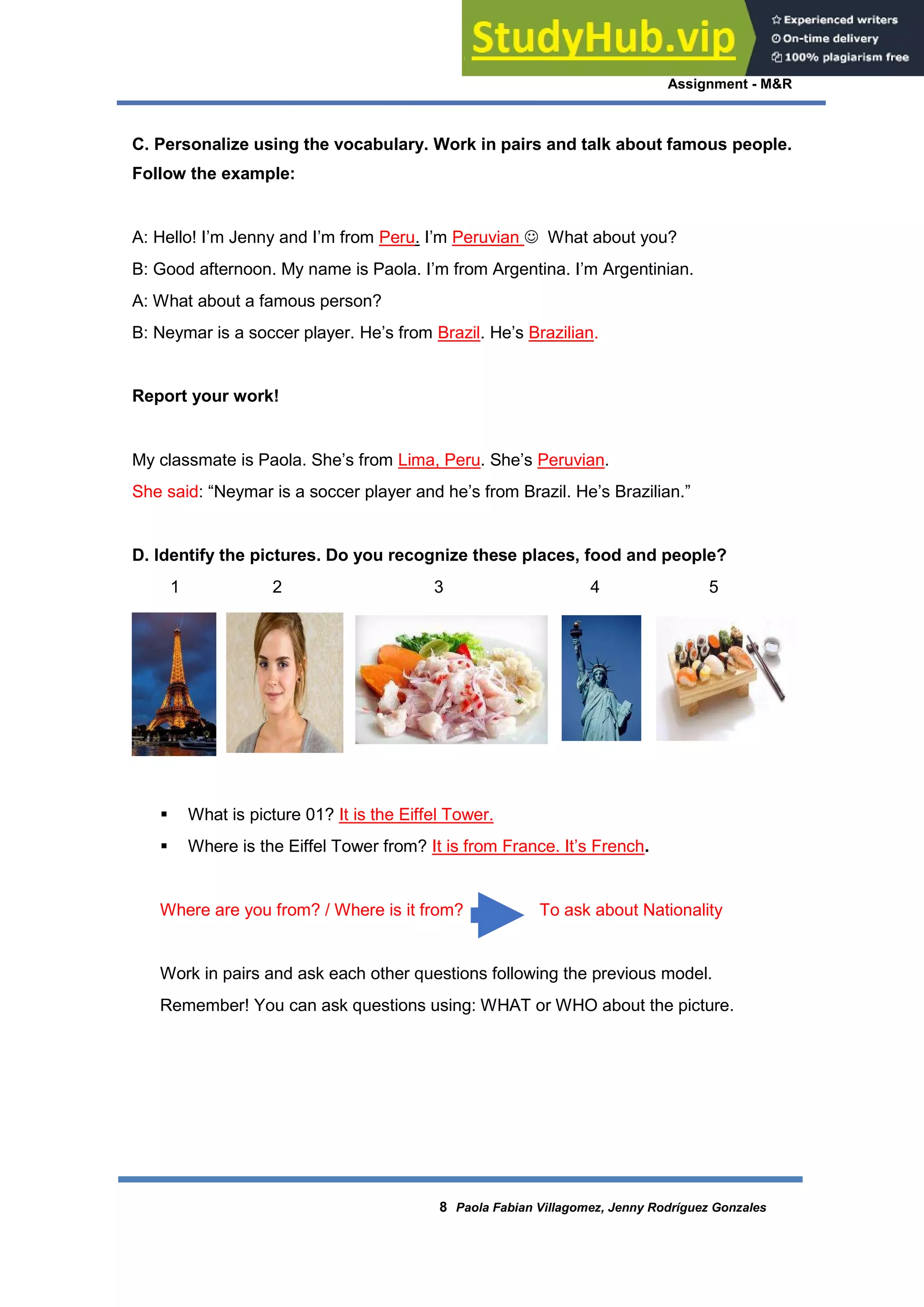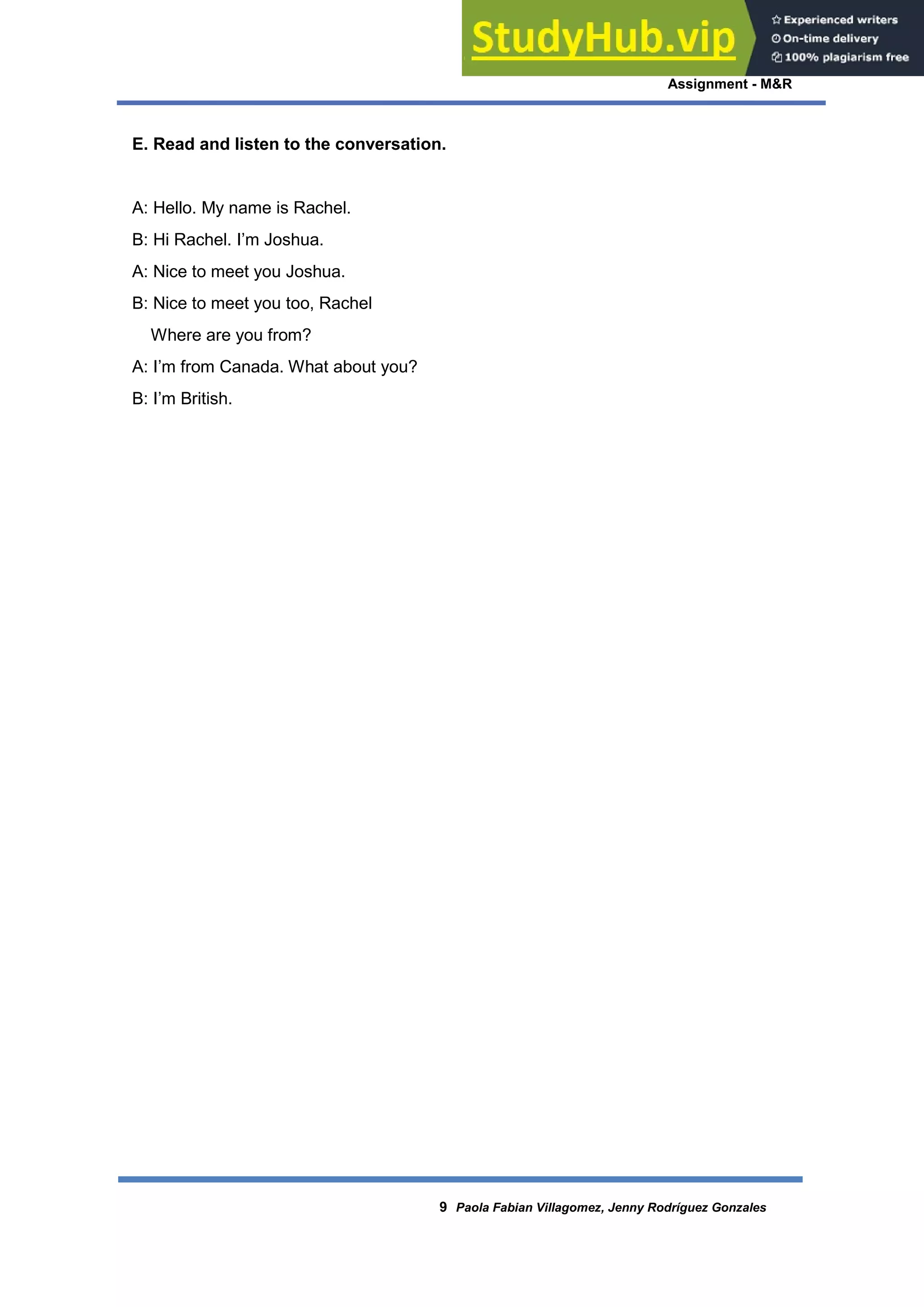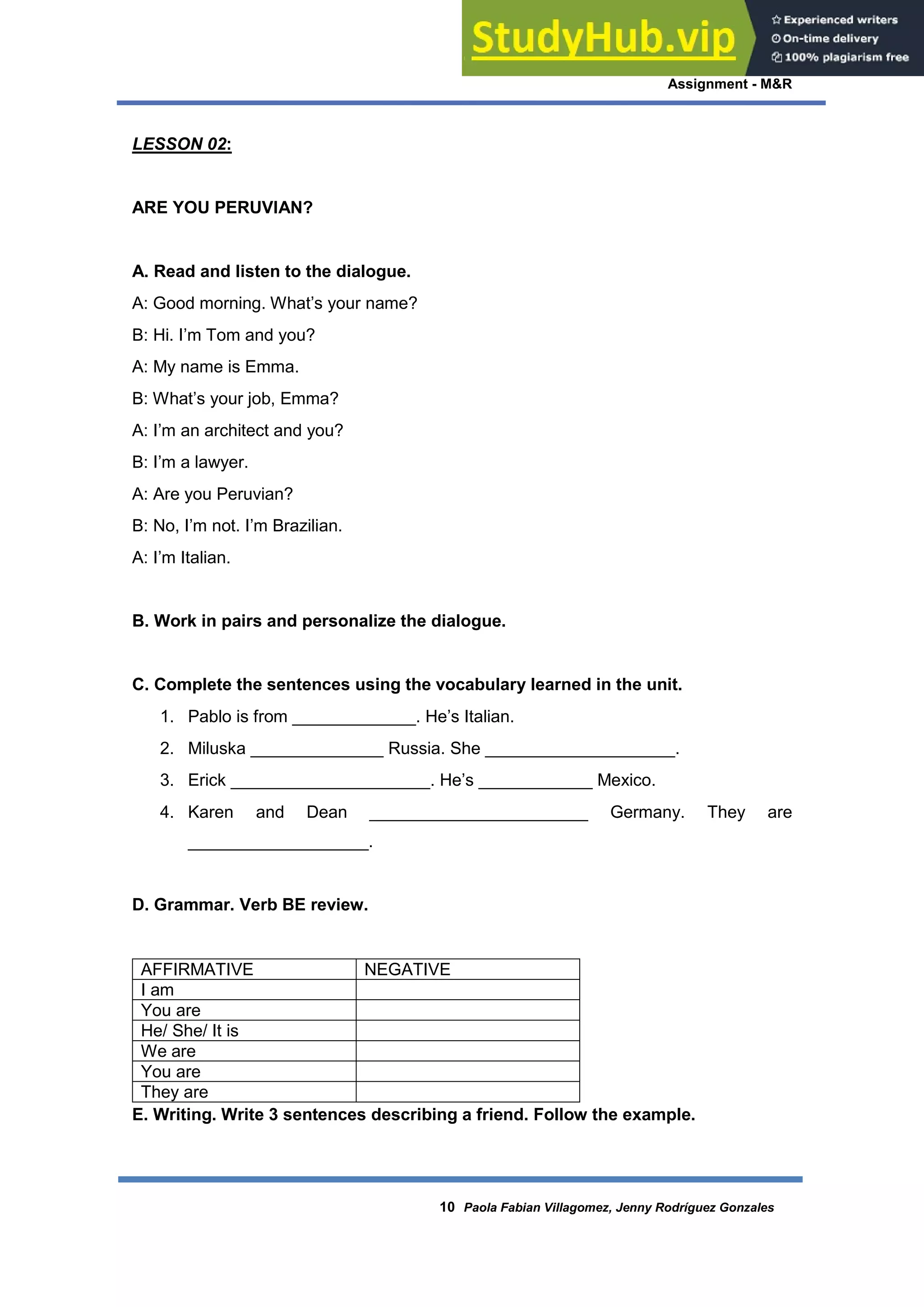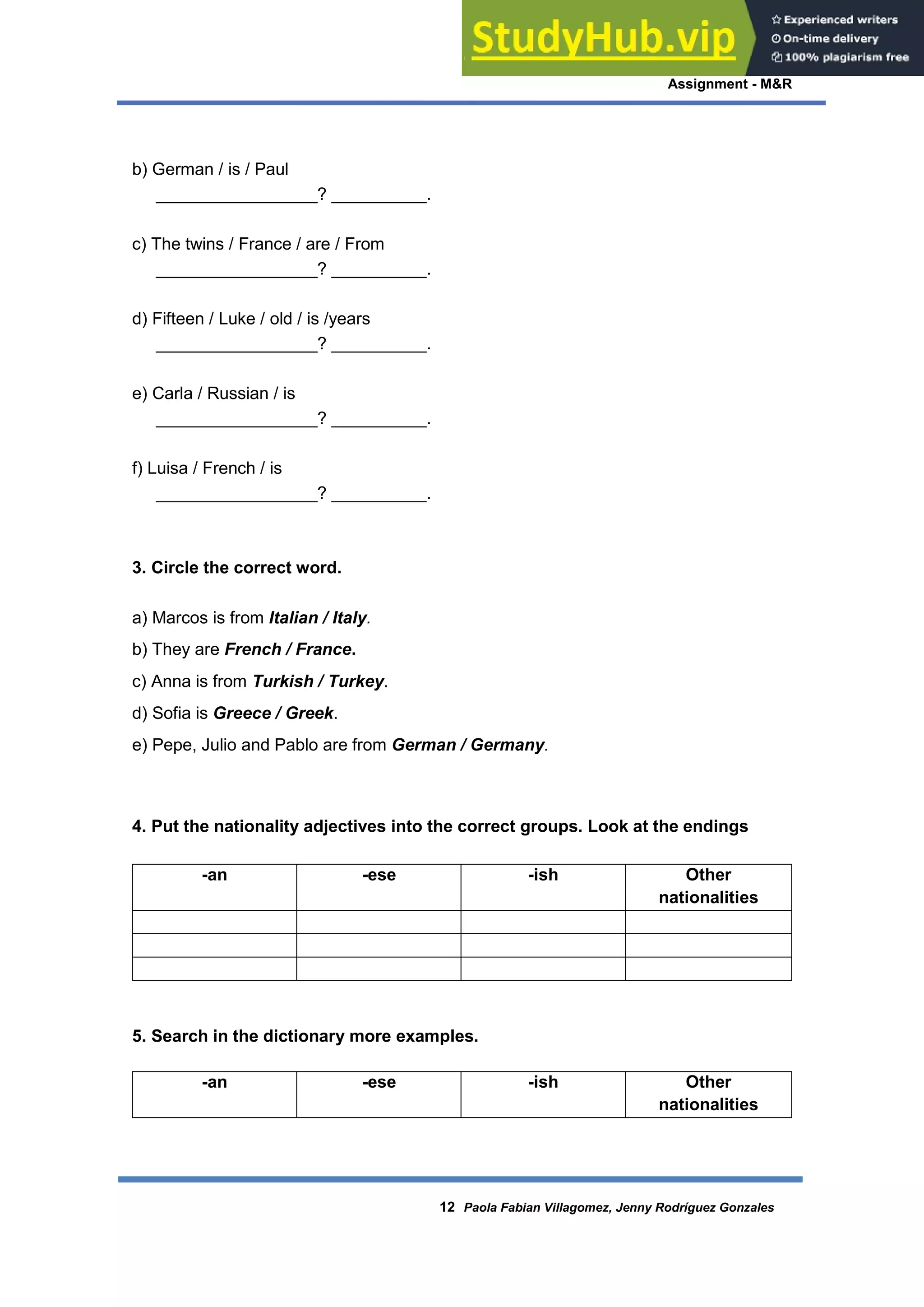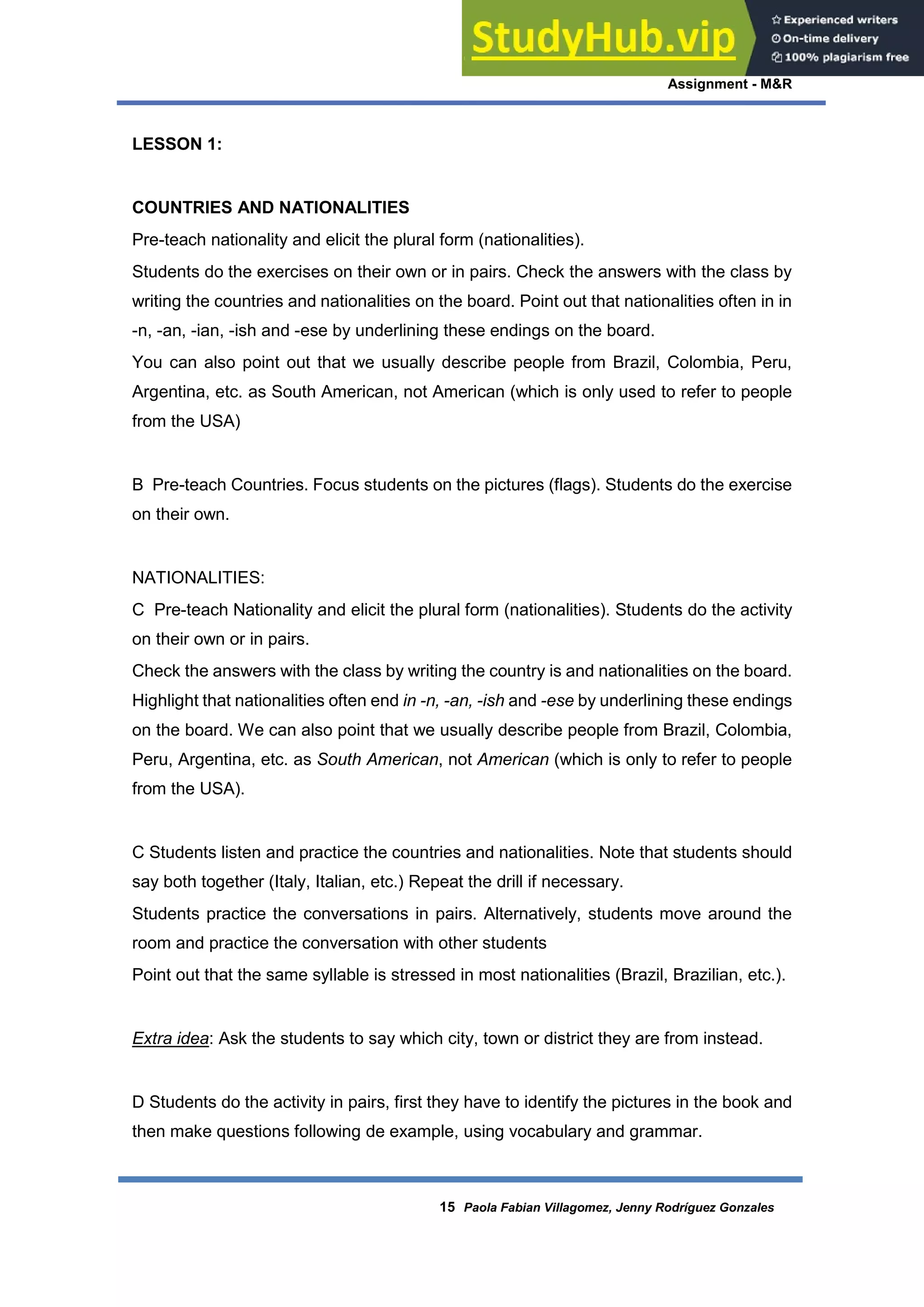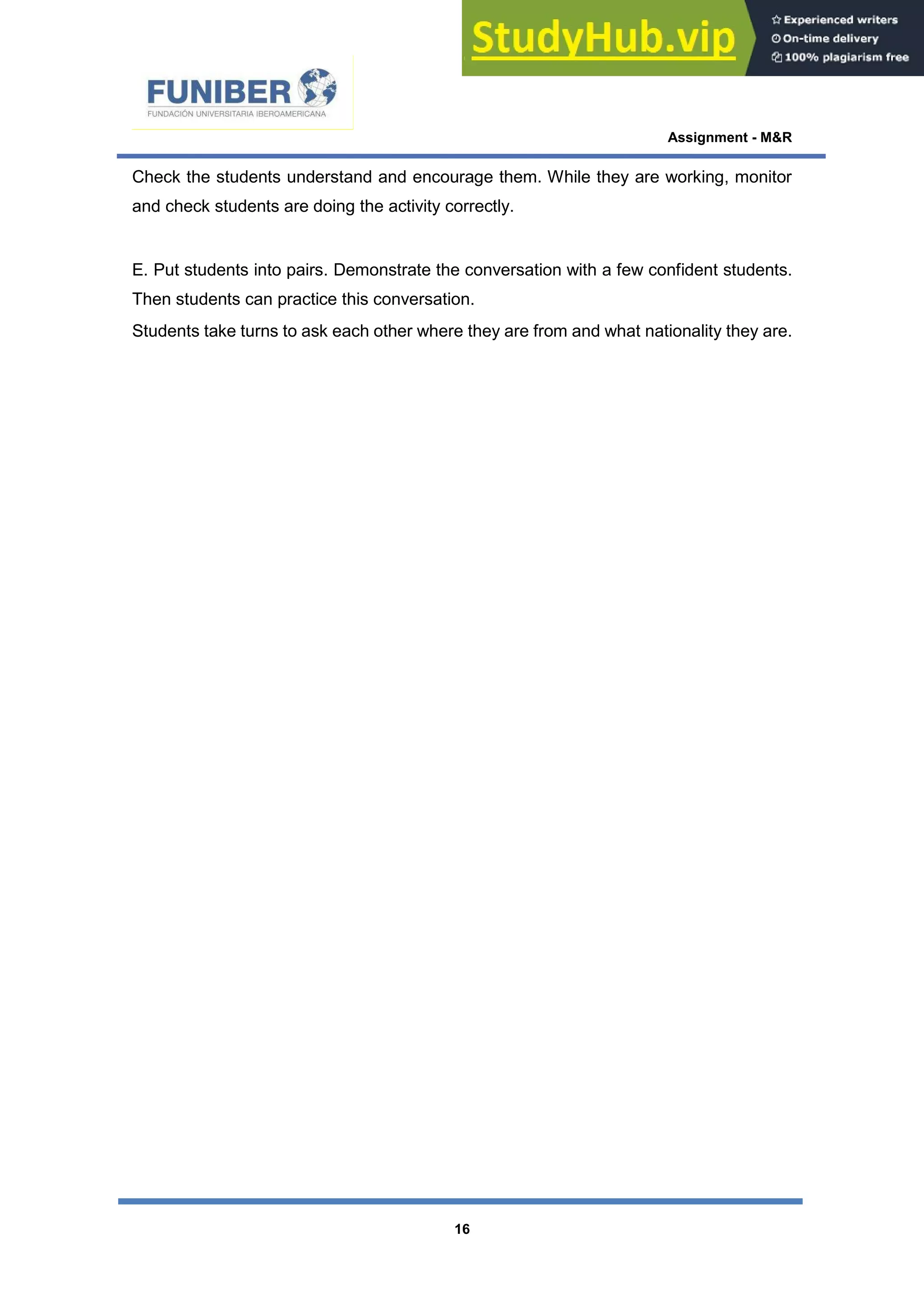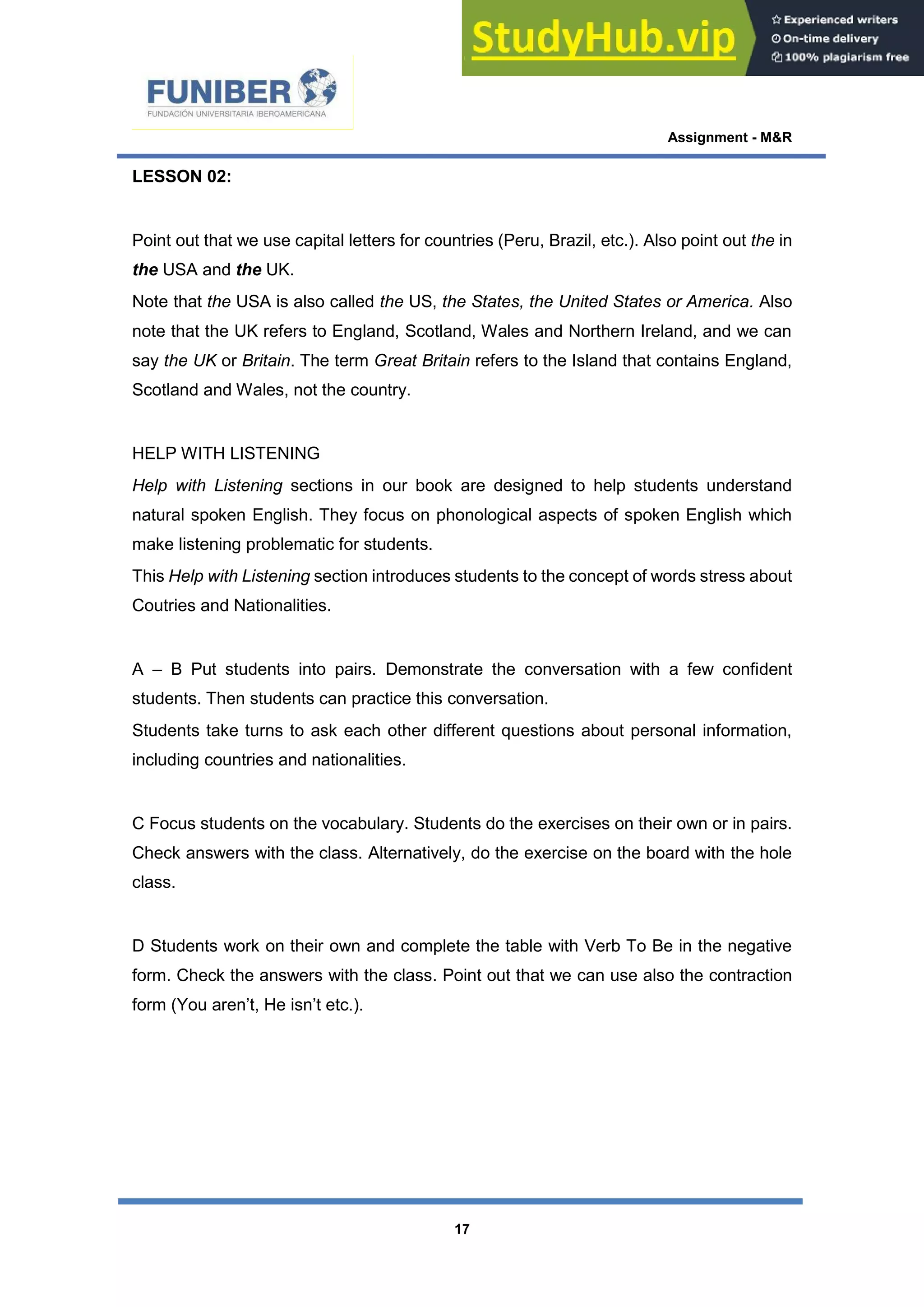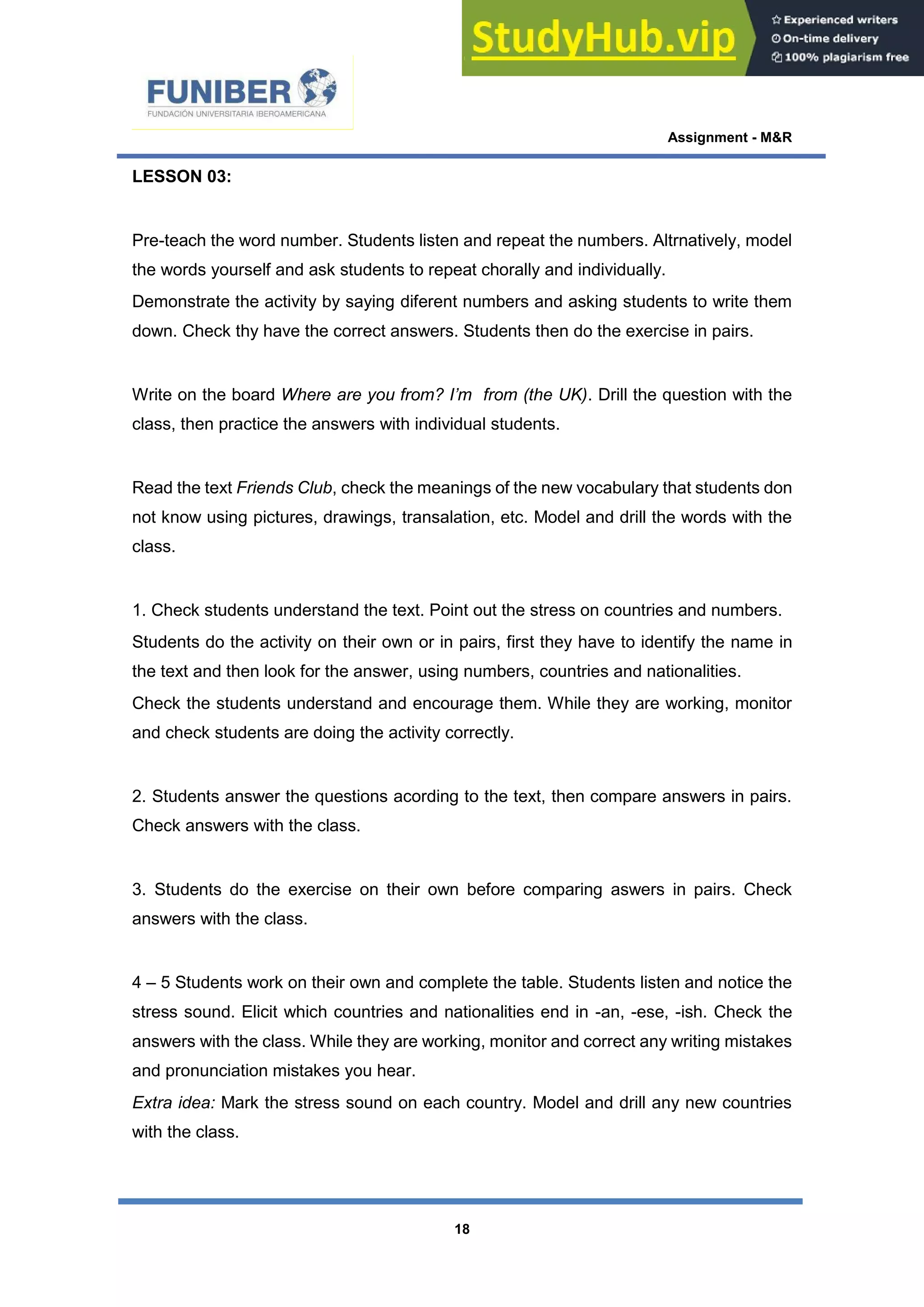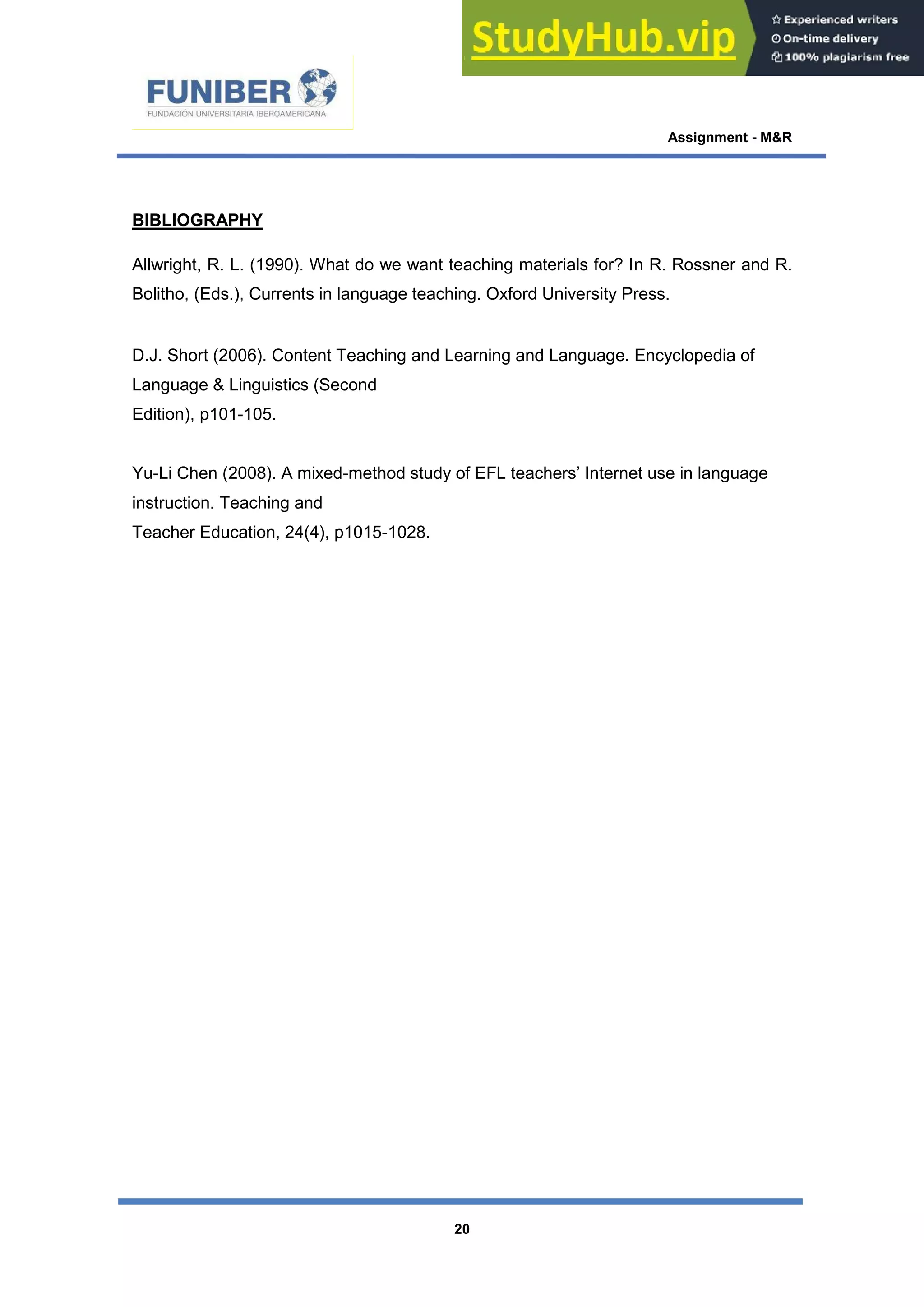This document discusses the development of self-produced teaching materials for an English language unit on countries and nationalities for beginner students. It explains that textbooks often dictate the content and approach, so the teachers designed their own materials to make it more communicative and student-centered. They researched different syllabus types and chose to combine content-based and task-based approaches. In developing the materials, they considered factors like vocabulary level, cultural content, instructions, and including visual/audio support. Their goal was to create clear, engaging materials that develop students' language abilities through meaningful communication practice.
